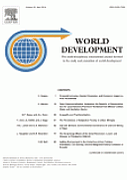Africa under a warming climate : the role of trade towards building resilient adaptation in agriculture
July 22, 2022

de Melo J., Solleder J-M. (2020, forthcoming) "Barriers to trade in environmental goods: How important they are and what should developing countries expect from their removal", World Development, vol. 130.